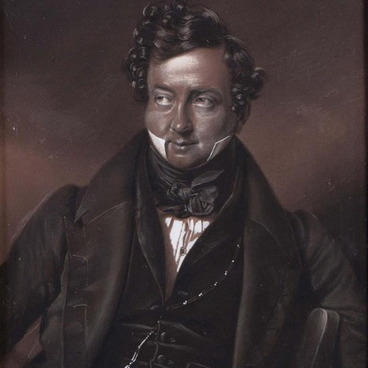Ilya Yefimovich Repin worked his way up from a provincial icon painter to a reputed master. He worked in many genres: historical, every day, portraits and landscapes. Repin’s paintings are created in the spirit of realism, however, at certain periods of his activity, they were influenced by impressionism and the experience of working plein-air (from nature in the fresh air).
In his work, Ilya Repin repeatedly created complex multi-figured compositions: “Religious Procession in the Kursk Province” (1883), “Reply of the Zaporozhian Cossacks to Sultan Mehmed IV of the Ottoman Empire” (1891), “Ceremonial Sitting of the State Council on 7 May 1901” (1903). Even though all these are large-scale canvases of several meters in height and width, the level of their execution and elaboration always remains invariably high. Undoubtedly, these demands being a master of composition, but serious preparatory work is no less important. Sketches are an important and integral part of an artistic search. Before starting work on large compositions, Ilya Repin created many preparatory studies and sketches.
One of such examples is a sketch for the painting “Alexander III receiving rural district elders in the yard of Petrovsky Palace in Moscow”. This work was commissioned to the artist by the Ministry of the Imperial Court in the summer of 1884. The action of the picture takes us back to the time of Emperor Alexander III coronation. On this occasion, rural district elders were selected from each district and went to Moscow at state expense to participate in the celebrations. On May 21, 1883, a national holiday was organized on the Khodynskoye field. Three huge tents with refreshments were pitched for the foremen in front of the Petrovsky Palace. At the end of the festive dinner, the elders were lined up in the courtyard, and the king came out to them. At some point, Alexander III unexpectedly broke the ceremonial and switched to impromptu, giving a short emotional speech. It is this moment that is depicted in the canvas.
Ilya Repin depicted more than seventy figures on canvas, each of which is unique. Among those standing with their backs to the viewer is a foreman from Turkestan in a robe and skullcap; foremen from Poland in uniforms with gold collar. The man shown in the sketch from the Zaraysk Kremlin collection does not have any specific features, so it is difficult to determine from which region he came. This is a simple peasant, common for Russian villages: a wide back, a strong neck, hair cut into a circle, a thick beard. He served as a prototype for one of the foremen depicted in the foreground of the painting.
In his work, Ilya Repin repeatedly created complex multi-figured compositions: “Religious Procession in the Kursk Province” (1883), “Reply of the Zaporozhian Cossacks to Sultan Mehmed IV of the Ottoman Empire” (1891), “Ceremonial Sitting of the State Council on 7 May 1901” (1903). Even though all these are large-scale canvases of several meters in height and width, the level of their execution and elaboration always remains invariably high. Undoubtedly, these demands being a master of composition, but serious preparatory work is no less important. Sketches are an important and integral part of an artistic search. Before starting work on large compositions, Ilya Repin created many preparatory studies and sketches.
One of such examples is a sketch for the painting “Alexander III receiving rural district elders in the yard of Petrovsky Palace in Moscow”. This work was commissioned to the artist by the Ministry of the Imperial Court in the summer of 1884. The action of the picture takes us back to the time of Emperor Alexander III coronation. On this occasion, rural district elders were selected from each district and went to Moscow at state expense to participate in the celebrations. On May 21, 1883, a national holiday was organized on the Khodynskoye field. Three huge tents with refreshments were pitched for the foremen in front of the Petrovsky Palace. At the end of the festive dinner, the elders were lined up in the courtyard, and the king came out to them. At some point, Alexander III unexpectedly broke the ceremonial and switched to impromptu, giving a short emotional speech. It is this moment that is depicted in the canvas.
Ilya Repin depicted more than seventy figures on canvas, each of which is unique. Among those standing with their backs to the viewer is a foreman from Turkestan in a robe and skullcap; foremen from Poland in uniforms with gold collar. The man shown in the sketch from the Zaraysk Kremlin collection does not have any specific features, so it is difficult to determine from which region he came. This is a simple peasant, common for Russian villages: a wide back, a strong neck, hair cut into a circle, a thick beard. He served as a prototype for one of the foremen depicted in the foreground of the painting.




